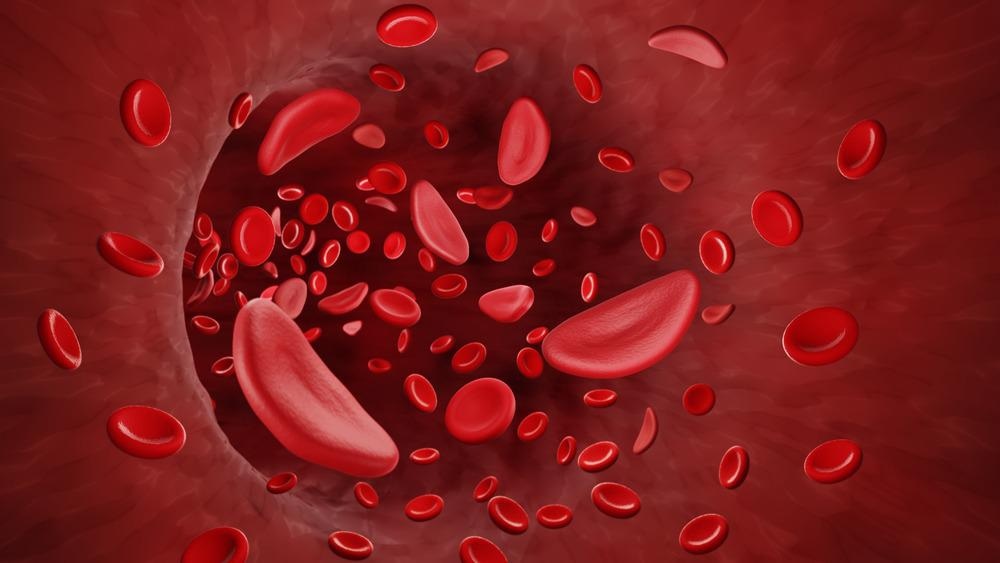In a recent article published in the journal ACS Applied Nano Materials, the authors designed and constructed iron oxide/metal organic framework/ ibuprofen (Fe3O4/MOF/IBU) nanoremovers using a two-step procedure. The obtained nanoremovers were used to remove p-cresol sulfate (PCS) from the blood samples of hemodialysis patients. This work is a contribution to the field of nanoremovers-based clinical applications.

Study: Ibuprofen Loaded into Metal–Organic Framework Shells Coated on Fe3O4 Nanoparticles for the Removal of Protein-Bound Uremic Toxins in Blood. Image Credit: ART-ur/Shutterstock.com
Elimination of Protein-Binding Uremic Toxins (PBUTs)
The integration of PBUTs with human serum albumin (HSA) via physical or electronic interactions causes structural and functional changes in proteins, leading to multiple organ failures.
PCS, derived from the tyrosine and phenylalanine amino acids in the human body, is one of PBUT’s main representative structures. Due to their affinity towards serum albumin, 80 % of free PCS in the bloodstream binds to the serum albumin’s Sudlow site II. This integration hinders the biological activities of human proteins.
Kremezin (AST-120) is a commonly prescribed drug for chronic kidney diseases (CKD). It absorbs the uremic toxic precursors and eliminates them from the body through excretion. However, the non-specificity of this drug towards proteins results in greater elimination of beneficial plasma protein over PBUTs. The other probable blood purification and hemodialysis methods are inefficient in PBUTs elimination. Hence, an effective therapeutic drug for PBUTs elimination is of great importance.
It is important to note that IBU has a greater affinity to Sudlow site II than PCS. IBU effectively displaces the PBUTs at the Sudlow site II of has, thus releasing the PBUTs into the bloodstream.
Construction of Novel Nanoremovers, Fe3O4/MOF/IBU
In the present study, the authors constructed a novel Fe3O4/MOF/IBU nanoremover to remove PCS. The first step is a one-step synthesis of magnetic Fe3O4 followed by applying iron-based MOF, Materials of Institut Lavoisier (MIL)-100 (Fe) on Fe3O4 nanoparticle surface to form porous Fe3O4/MOF nanoparticles.
In the next step, IBU gets adsorbed in the pores of the nanoparticles via pie-pie interactions between the organic ligands on MOF and aromatic rings of IBU. This forms novel Fe3O4/MOF/IBU nanoremovers. On releasing the nanoremovers into the bloodstream, they displace the PSA at the Sudlow site II with IBU, releasing the nanoremovers with PCS (Fe3O4/MOF/PCS). Consequently, Fe3O4/MOF/PCS magnetic separation from the blood becomes easy.
Scanning electron microscopy (SEM), transmission electron microscopy (TEM), dynamic light scattering (DLS), Fourier transform infrared (FT-IR), thermogravimetric (TGA), and X-ray photoelectron spectroscopy (XPS) analysis were employed to analyze the morphology, size, and composition of novel nanoremovers. In addition, the zeta (ζ) potential predicted the charge and the hemolysis rate determined the biocompatibility of the nanoremovers. Finally, the removal mechanism and efficiency of nanoremovers were verified using their displacement in an in vivo experiment.
Structure-Property Analysis of Fe3O4/MOF/IBU Nanoremovers
The SEM and TEM images depicted the diameter of Fe3O4 nanoparticles to be about 250 nanometers. A MOF shell of 30 nanometers thickness was synthesized in a one-step process using the organic ligand 1,3,5-pyromellitic acid.
IBU loading did not affect the morphology of Fe3O4/MOF nanoparticles. Compared to TEM images, DSL images of nanoremovers showed a slightly larger diameter (450 nanometers) of synthesized nanoremovers due to hydration.
ζ potential analysis of Fe3O4/MOF/IBU nanoremovers revealed a weak negative charge for Fe3O4, attributed to the presence of superficial hydroxyl groups. Furthermore, the potential of Fe3O4/MOF nanoparticles decreased from -11.4 electron volts to -15.8 electron volts on IBU loading to obtain Fe3O4/MOF/IBU nanoremovers.
The FT-IR spectroscopy characterization of Fe3O4 showed a Fe−O vibration peak at the 588-centimeter inverse. Moreover, 1562 and 1442-centimeter inverse peaks in the Fe3O4/MOF spectrum correspond to carbonyl (C=O) stretching and aromatic stretching, confirming the MOF shell encapsulation. Finally, the 1720-centimeter inverse peak in Fe3O4/MOF/IBU spectrum corresponds to the aliphatic group in IBU.
The stability of Fe3O4/MOF/IBU nanoremovers in biological fluids was confirmed by its seven-day storage in Dulbecco’s modified Eagle medium solution and blood serum albumin solution [0.5% (w/w)] without morphological changes.
The hemolytic rate of 4 milligrams per milliliter concentration of Fe3O4/MOF/IBU nanoremovers was less than 2% confirming its nonhemolytic nature and biocompatibility.
Removal of Free and Protein-Bound PCS by Fe3O4/MOF/IBU Nanoremovers
This study on Fe3O4/MOF optimal removal dose to remove PCS revealed that 3 milligrams per microliter dosage of the Fe3O4/MOF nanoparticle have the removal efficiency of 79%. In addition, the S element content in elemental analysis of PCS-bound Fe3O4/MOF nanoparticles confirmed the PCS adsorption on Fe3O4/MOF nanoparticles.
The adsorption kinetics analysis confirmed that the adsorption process of PCS on Fe3O4/MOF nanoparticles is a chemical process. Moreover, the monolayer adsorption of PCS on Fe3O4/MOF nanoparticles was confirmed using thermodynamic analysis.
Finally, the removal efficiency of PCS by Fe3O4/MOF nanoparticles was 26.7%, indicating the efficiency of Fe3O4/MOF/IBU nanoremovers as uremic toxins eliminators in blood.
The current work illustrates a reliable strategy to remove PBUTs in the blood. The structural characterization confirmed the successful synthesis of Fe3O4/MOF nanoremovers while the analysis of blood coagulation time, cell activity tests, and hemolysis rate confirmed its good biocompatibility.
Furthermore, the in vitro studies confirmed that the displacement method of IBU from Fe3O4/MOF nanoremovers was more efficient to remove PCS than direct removal by Fe3O4/MOF, wherein removal efficiency increased from 21.3% to 34%.
Reference
Chen, T., Wang, M., Tan, K., Chen, C., Li, M. and Mao, C., 2022. Ibuprofen Loaded into Metal–Organic Framework Shells Coated on Fe<sub>3</sub>O<sub>4</sub> Nanoparticles for the Removal of Protein-Bound Uremic Toxins in Blood. ACS Applied Nano Materials,. https://pubs.acs.org/doi/abs/10.1021/acsanm.2c01026
Disclaimer: The views expressed here are those of the author expressed in their private capacity and do not necessarily represent the views of AZoM.com Limited T/A AZoNetwork the owner and operator of this website. This disclaimer forms part of the Terms and conditions of use of this website.